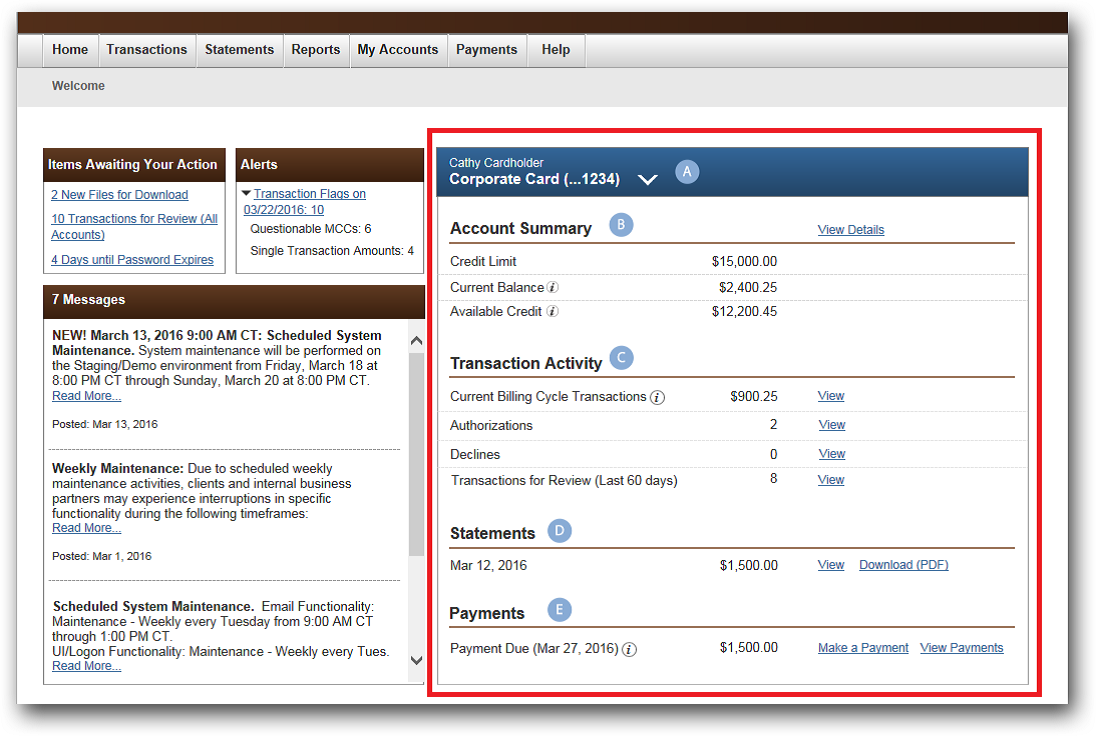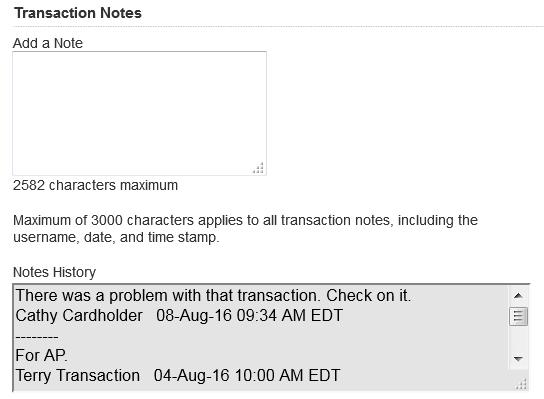What’s new in PaymentNet:
Password Requirements
With the new release, users will be required to include at least one uppercase character and one lowercase character in their passwords. All new users will be required to follow these requirements when creating their password. Existing users will be required to comply with the new requirements when their current password expires or when they change their password voluntarily.
Security Questions
Users will be required to update all their security questions the first time they log in to PaymentNet after the new release goes live. This enhancement provides improved security by replacing two questions for which the answers could be found in public records.
Subsequently, when a user is required to answer security questions (such as when resetting a password), two questions will be chosen at random from the questions the user answered. If the user cannot answer both questions correctly, a new set of questions will be displayed.
Cardholder Dashboard
With the new release, PaymentNet will introduce a Cardholder Dashboard, which adds a new panel to the Welcome screen that provides key information directly on the cardholder’s home page, such as:
- Real-time account balance information
- Recent transaction activity, including authorizations and declines
- One-click access to view a prior statement
UPENNCardholder role will see the new Dashboard panel on the Welcome screen when you log in to PaymentNet after the new release goes live.
Figure 1: PaymentNet Welcome Screen with the Cardholder Dashboard
 border="0" width="815" height="547" />
border="0" width="815" height="547" />
Note: Some features of the Dashboard may not be available to all users, depending on the organization and hierarchy settings.
A. Account Selector. Displays the cardholder’s name as it appears on the account, along with the account number and status (for accounts with any status other than Active). (If account numbers are masked for your organization, only the last four digits are shown.) Cardholders who are assigned to multiple accounts will see details about their default account, and they can use the drop-down list to select another account to view. If the account has a status of New, an Activate button displays so that the user can confirm the account number and activate the card, making it ready for use.
B. Account Summary. Shows the credit limit, current balance, and amount of available credit for the selected account. By clicking the View Details link, the cardholder can view account information, including contact information and card controls, on the My Account Detail screen.
C. Transaction Activity. Summarizes the current activity on the account, including:
- The total amount of the transactions posted in the current billing cycle.
- The number of transactions that have been authorized in the last 7 days.
- The number of transactions that have been declined in the last 7 days.
- The number of transactions posted to the account in the last 60 days that still need to be reviewed.
The cardholder can view a list of the transactions in any of these categories by clicking the corresponding View link.
D. Statements. Displays the date and total amount of the most recent statement for the selected account. The cardholder can view the statement details by clicking the View link or download a PDF version of the statement by clicking the Download (PDF) link.
Cardholder Welcome Screen
On the Welcome screen, a new Activate link will display in the Items Awaiting Your Action panel when the cardholder has a new card account that needs to be activated. Clicking the link will prompt the user to confirm the account number and activate the card so that it is ready for use.
If new transactions have been posted to the cardholder’s accounts in the last 60 days, the Items Awaiting Your Action panel will also include a link that shows the number of new transactions across all the accounts and allows the user to view them on the Transaction List screen.
In addition, the Messages panel will be enhanced to show the total number of messages in the panel header, and spacing between messages will be increased for improved readability. Messages posted within the last 15 days will be marked as “NEW”. Cardholders can use the Read More and Read Less links to expand and collapse the message text. These enhancements are available only for cardholders who use the Cardholder Dashboard.
Transaction Notes History
On the Transaction Details – General Information screen, the Transaction Notes field will be relabeled Add a Note, and a new Transaction Notes History field will be added. The history field will contain all the notes that have been entered for a transaction, along with the name of the user who added each note and the date and time when the note was saved. The notes history will be limited to a maximum of 3000 characters; the user name and time stamp, as well as the spaces and punctuation that are automatically added for readability, will count toward the character limit.
Figure 2: Transaction Notes History
 border="0" />
border="0" />
Transaction Queries
On the Transaction List screen, the words “(All Accounts)” will be appended to the names of system queries available in the query drop-down list. This enhancement will inform users that when they select one of these queries, the screen will refresh to show transactions from all accounts within their scope of view that meet the query criteria.

